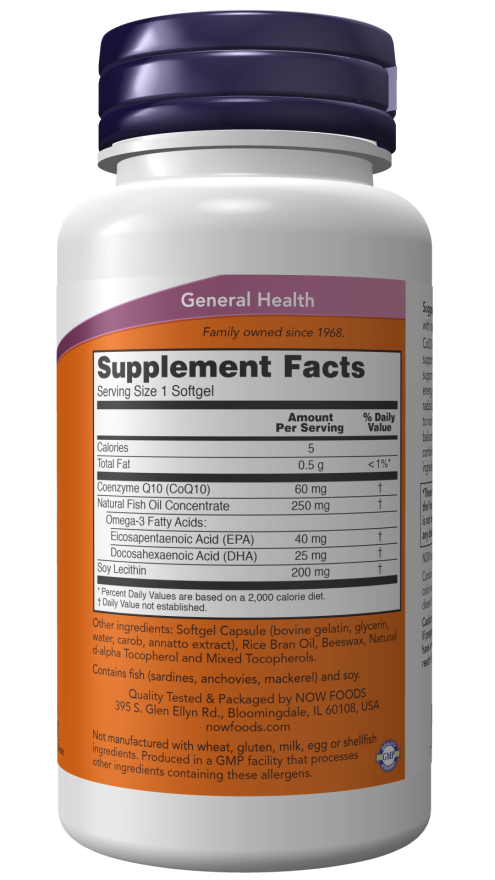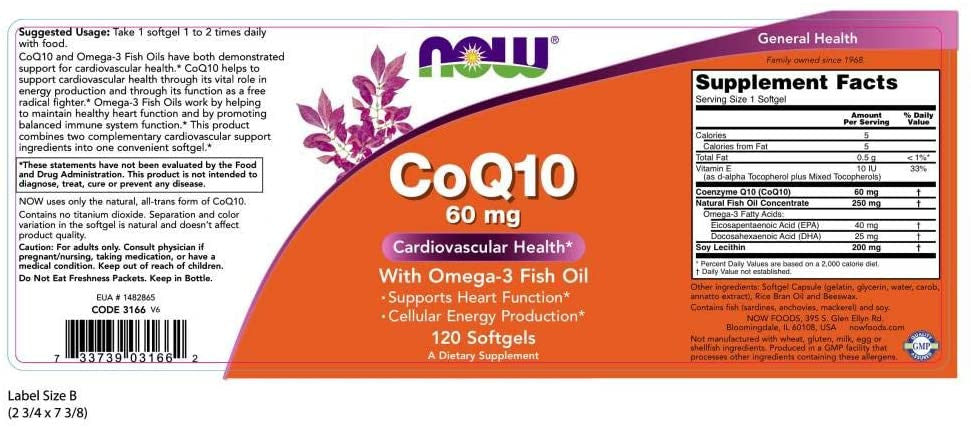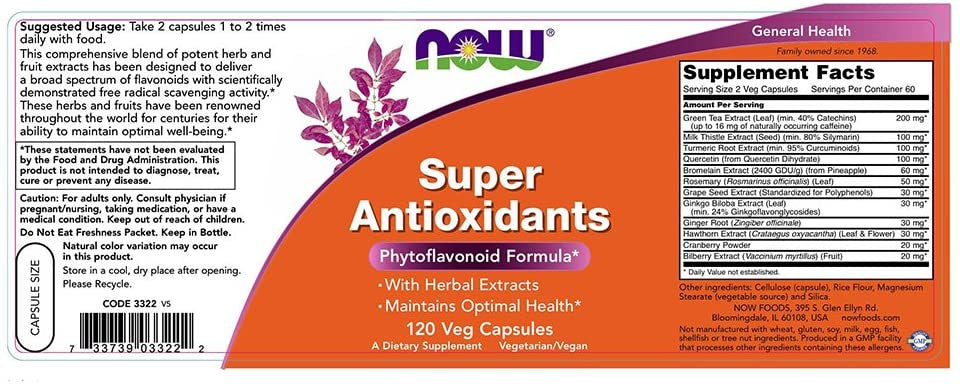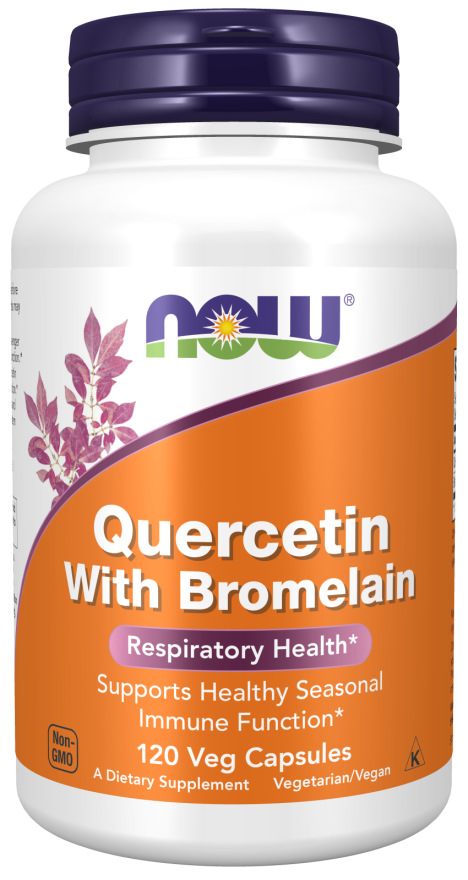Antioxidants are nutrients such as vitamins and minerals or enzymes capable of counteracting the damaging effects of the oxidation-causing free radicals in the body.
Free radicals are the product of oxidative stress and create harmful molecules capable of damaging cells, proteins and DNA. Excesses damage by free radicals is believed to be a major cause of diseases including cancer. Free radical damage is impossible to avoid, as we are constantly exposed to oxidation from pollution, sunlight, smoking, strenuous exercise, x-rays and other external sources as well as internal sources such as normal aerobic respiration, metabolism, and bodily inflammation among other sources.
The paradox is that oxidation reactions are critical for life, but they can also cause damage; thus, plants and animals maintain complex systems of multiple types of antioxidants, such as glutathione, vitamin C, and vitamin E as well as enzymes such as catalase, superoxide dismutase and various peroxidases. Too low levels of antioxidants or inhibition of the antioxidant enzymes causes oxidative stress and may lead to damaged DNA, proteins or cellular-death.
Antioxidants are available from food sources such as fruits and vegetables, as well as in other foods including nuts, grains and some meats, poultry and fish and available in a number of dietary supplements. The list below describes food and supplement sources of common antioxidants.
-
Beta-carotene is found in many foods that are orange in color, including sweet potatoes, carrots, cantaloupe, squash, apricots, pumpkin, and mangos. Some green leafy vegetables including collard greens, spinach, and kale are also rich in beta-carotene.
-
Lutein, best known for its association with healthy eyes, is abundant in green, leafy vegetables such as collard greens, spinach, and kale.
-
Lycopene is a potent antioxidant found in tomatoes, watermelon, guava, papaya, apricots, pink grapefruit, blood oranges, and other foods. Estimates suggest 85 percent of American dietary intake of lycopene comes from tomatoes and tomato products.
-
Selenium is a mineral, not an antioxidant nutrient. However, it is a component of antioxidant enzymes. Plant foods like rice and wheat are the major dietary sources of selenium in most countries. The amount of selenium in soil, which varies by region, determines the amount of selenium in the foods grown in that soil. Animals that eat grains or plants grown in selenium-rich soil have higher levels of selenium in their muscle. In the United States, meats and bread are common sources of dietary selenium. Brazil nuts also contain large quantities of selenium.
-
Vitamin A is found in three main forms: retinol (Vitamin A1), 3,4-didehydroretinol (Vitamin A2), and 3-hydroxy-retinol (Vitamin A3). Foods rich in vitamin A include liver, sweet potatoes, carrots, milk, egg yolks and mozzarella cheese.
-
Vitamin C is also called ascorbic acid, and can be found in high abundance in many fruits and vegetables and is also found in cereals, beef, poultry and fish.
-
Vitamin E, also known as alpha-tocopherol, is found in almonds, in many oils including wheat germ, safflower, corn and soybean oils, and also found in mangos, nuts, broccoli and other foods.
2. What do antioxidants do and what scientific studies give evidence to support this?
Antioxidants work to protect us from dangerous free radicals roaming the body by bonding with them before they wreak havoc. Free radicals may have one or more unpaired electrons and scavenge the body attempting steel or donate electrons from cells, proteins or DNA, which causes damage. Antioxidants work to protect the body by rendering highly unstable free radicals inert by forming chemical bonds with them. Due to the constant need for neutralization of antioxidants caused by oxidative damage, a consistent supply of available antioxidants is highly beneficial within the body to maintain stability.
The main antioxidants are vitamins A, C and E. Says expert Robin Brett Parnes, MS, MPH, "In addition to enzymes, vitamins, and minerals, there appear to be many other nutrients and compounds that have antioxidant properties. Among them is coenzyme Q10 (CoQ10, or ubiquinone), which is essential to energy production and can also protect the body from destructive free radicals. Also, uric acid, a product of DNA metabolism, has become increasingly recognized as an important antioxidant. Additionally, substances in plants called phytochemicals are being investigated for their antioxidant activity and health-promoting potential."
There are a number of studies that support antioxidants' protective action in the body under the right circumstances. It has been shown that in the right dosages, antioxidants have a useful effect; however, super doses should be avoided as the antioxidants may become pro-oxidants themselves.
Clinical use of antioxidant vitamin supplementation may act as a potential preventative to coronary heart disease (CHD). Epidemiologic studies conducted in 1999 showed a lower CHD morbidity and mortality in persons who consume larger quantities of antioxidants in foods or supplements. Thus, it was discovered that supplementation with certain nutrients is beneficial in reducing the incidence of CHD events. Recent studies show that supplementation with antioxidant vitamins E and C have benefits in CHD prevention; however, over-supplementation with ß-carotene may have deleterious effects and is not recommended.
A randomized, placebo-controlled study conducted in 2001 on age-related eye disease showed that high dose supplementation of 500 mg of vitamin C, 400 IU of vitamin E, 15 mg of beta-carotene, 80 mg of zinc, and 2 mg of copper significantly reduced development of advanced age-related macular degeneration (AMD) compared to placebo. Also the antioxidant using group had a major reduction in the rate of at least moderate visual acuity loss.
Antioxidant supplement use was also examined in a study of 11,178 elderly persons. This study found that vitamin E reduced the relative risk of all-cause mortality by 34 percent and the relative risk of CHD mortality by 47 percent. Also, the study showed that combining vitamin E and C supplementation reduced total mortality by 42 percent and CHD mortality by 53 percent. The average dosage of vitamin E was greater than 100 IU per day.
These studies and many more show the intriguing and exciting benefits of supplementing with antioxidants. More research is being conducted on antioxidants all the time to determine the best use and dosage for maximum benefit without detriment.
The following is a list of only a few of the many studies conducted on antioxidants:
- Diaz MN, Frei B, Vita JA, Keaney JF Jr. Antioxidants and atherosclerotic heart disease. N Engl J Med 1997;337:408-16.
- Schwartz CJ, Valente AJ, Sprague EA. A modern view of atherogenesis. Am J Cardiol 1993;71:9B-14B.
- Jialal I, Grundy SM. Influence of antioxidant vitamins on LDL oxidation. Ann N Y Acad Sci 1992; 669:237-48.
- O'Keefe JH Jr, Conn RD, Lavie CJ, Bateman TH. The new paradigm for coronary artery disease: altering risk factors, atherosclerotic plaques, and clinical prognosis. Mayo Clin Proc 1996;71:957-65.
- Jha P, Flather M, Lonn E, Farkouh M, Yusuf S. The antioxidant vitamins and cardiovascular disease. A critical review of epidemiologic and clinical trial data. Ann Intern Med 1995;123:860-72.
- Odeh RM, Cornish LA. Natural antioxidants for the prevention of atherosclerosis. Pharmacotherapy 1995;15:648-59.
- Kwiterovich PO Jr. The effect of dietary fat, antioxidants, and pro-oxidants on blood lipids, lipoproteins, and atherosclerosis. J Am Diet Assoc 1997;97(7 suppl):S31-41.
- Heitzer T, Just H, Munzel T. Antioxidant vitamin C improves endothelial dysfunction in chronic smokers. Circulation 1996;94:6-9.
- Reilly M, Delanty N, Lawson JA, FitzGerald GA. Modulation of oxidant stress in vivo in chronic cigarette smokers. Circulation 1996;94:19-25.
- Ting HH, Timimi FK, Haley EA, Roddy MA, Ganz P, Creager MA. Vitamin C improves endothelium-dependent vasodilation in forearm resistance vessels of humans with hypercholesterolemia. Circulation 1997;95:2617-22.
- Plotnick GD, Corretti MC, Vogel RA. Effect of antioxidant vitamins on the transient impairment of endothelium-dependent brachial artery vasoactivity following a single high-fat meal. JAMA 1997;278:1682-6.
- Gaziano JM, Hatta A, Flynn M, Johnson EJ, Krinsky NI, Ridker PM, et al. Supplementation with beta-carotene in vivo and in vitro does not inhibit low-density lipoprotein oxidation. Atherosclerosis 1995;112:187-95.
- Gey KF, Puska P, Jordan P, Moser UK. Inverse correlation between plasma vitamin E and mortality from ischemic heart disease in cross-cultural epidemiology. Am J Clin Nutr 1991;53(1 suppl):326S-34S.
- Verlangieri AJ, Kapeghian JC, el-Dean S, Bush M. Fruit and vegetable consumption and cardiovascular mortality. Med Hypotheses 1985;16:7-15.
- Riemersma RA, Wood DA, Macintyre CC, Elton RA, Gey KF, Oliver MF. Risk of angina pectoris and plasma concentrations of vitamins A, C, and E and carotene. Lancet 1991;337:1-5.
- Luoma PV, Nayha S, Sikkila K, Hassi J. High serum alpha-tocopherol, albumin, selenium and cholesterol, and low mortality from coronary heart disease in northern Finland. J Intern Med 1995; 237:49-54.
- Bolton-Smith C, Woodward M, Tunstall-Pedoe H. Dietary intake by food frequency questionnaire and odds ratios for coronary heart disease risk. II. The antioxidant vitamins and fibre. Eur J Clin Nutr 1992;46:85-93.
- Knekt P, Reunanen A, Jarvinen R, Seppanen R, Heliovaara M, Aromaa A. Antioxidant vitamin intake and coronary mortality in a longitudinal population study. Am J Epidemiol 1994;139:1180-9.
- Stampfer MJ, Hennekens CH, Manson JE, Colditz GA, Rosner B, Willett WC. Vitamin E consumption and the risk of coronary disease in women. N Engl J Med 1993;328:1444-9.
- Rimm EB, Stampfer MJ, Ascherio A, Giovannucci E, Colditz GA, Willett WC. Vitamin E consumption and the risk of coronary heart disease in men. N Engl J Med 1993;328:1450-6.
- Losonczy KG, Harris TB, Havlik RJ. Vitamin E and vitamin C supplement use and risk of all-cause and coronary heart disease mortality in older persons: the Established Populations for Epidemiologic Studies of the Elderly. Am J Clin Nutr 1996;64:190-6.
- Hodis HN, Mack WJ, LaBree L, Cashin-Hemphill L, Sevanian A, Johnson R, et al. Serial coronary angiographic evidence that antioxidant vitamin intake reduces progression of coronary artery atherosclerosis. JAMA 1995;273:1849-54.
- Blot WJ, Li JY, Taylor PR, Guo W, Dawsey S, Wang GQ, et al. Nutrition intervention trials in Linxian, China: supplementation with specific vitamin/mineral combinations, cancer incidence, and disease-specific mortality in the general population. J Natl Cancer Inst 1993;85:1483-92.
- Virtamo J, Rapola JM, Ripatti S, Heinonen OP, Taylor PR, Albanes D, et al. Effect of vitamin E and beta carotene on the incidence of primary nonfatal myocardial infarction and fatal coronary heart disease. Arch Intern Med 1998;158:668-75.
- Rapola JM, Virtamo J, Ripatti S, Huttunen JK, Albanes D, Taylor PR, et al. Randomised trial of alpha-tocopherol and beta-carotene supplements on incidence of major coronary events in men with previous myocardial infraction. Lancet 1997;349: 1715-20.
- Stephens NG, Parsons A, Schofield PM, Kelly F, Cheeseman K, Mitchinson MJ. Randomised controlled trial of vitamin E in patients with coronary disease: Cambridge Heart Antioxidant Study (CHAOS). Lancet 1996;347:781-6.
- Omenn GS, Goodman GE, Thornquist MD, Balmes J, Cullen MR, Glass A, et al. Effects of a combination of beta carotene and vitamin A on lung cancer and cardiovascular disease. N Engl J Med 1996;334:1150-5.
- Hennekens CH, Buring JE, Manson JE, Stampfer M, Rosner B, Cook NR, et al. Lack of effect of long-term supplementation with beta-carotene on the incidence of malignant neoplasms and cardiovascular disease. N Engl J Med 1996;334:1145-9.
- Enstrom JE, Kanim LE, Klein MA. Vitamin C intake and mortality among a sample of the United States population. Epidemiology 1992;3:194-202.
- Levine GN, Frei B, Koulouris SN, Gerhard MD, Keaney JF Jr, Vita JA. Ascorbic acid reverses endothelial vasomotor dysfunction in patients with coronary artery disease. Circulation 1996;93:1107-13.
- Bendich A, Machlin LJ. Safety of oral intake of vitamin E. Am J Clin Nutr 1988;48:612-9.
- Meyers DG, Maloley PA, Weeks D. Safety of antioxidant vitamins. Arch Intern Med 1996;156:925-35.
- Salonen JT, Alfthan G, Huttunen JK, Pikkarainen J, Puska P. Association between cardiovascular death and myocardial infarction and serum selenium in a matched-pair longitudinal study. Lancet 1982; 2(8291):175-9.
- Rimm EB, Katan MB, Ascherio A, Stampfer MJ, Willett WC. Relation between intake of flavonoids and risk for coronary heart disease in male health professionals. Ann Intern Med 1996;125:384-9.
- Hertog MG, Feskens EJ, Hollman PC, Katan MB, Kromhout D. Dietary antioxidant flavonoids and risk of coronary heart disease: the Zutphen Elderly Study. Lancet 1993;342:1007-11,.
- Jialal I. Micronutrient modulation of nonconventional risk factors for CAD. In: The role of diet in reducing the risk of heart disease. New York: McGraw-Hill, 1997:13-20.
- Sinatra ST. Refractory congestive heart failure successfully managed with high dose coenzyme Q10 administration. Mol Aspects Med 1997;18(suppl): S299-305.
- Soja AM, Mortensen SA. Treatment of congestive heart failure with coenzyme Q10 illuminated by meta-analyses of clinical trials. Mol Aspects Med 1997;18( suppl):S159-68.
- Simon HB. Patient-directed, nonprescription approaches to cardiovascular disease. Arch Intern Med 1994;154:2283-96.
- Warshafsky S, Kamer RS, Sivak SL. Effect of garlic on total serum cholesterol. A meta-analysis. Ann Intern Med 1993;119(7 pt 1):599-605.
- Berthold HK, Sudhop T, von Bergmann K. Effect of a garlic oil preparation on serum lipoproteins and cholesterol metabolism: a randomized controlled trial. JAMA 1998;279:1900-2.
- Boushey CJ, Beresford SA, Omenn GS, Motulsky AG. A quantitative assessment of plasma homocysteine as a risk factor for vascular disease. Probable benefits of increasing folic acid intakes. JAMA 1995;274:1049-57.
- Fallest-Strobl PC, Koch DD, Stein JH, McBride PE. Homocysteine: a new risk factor for atherosclerosis. Am Fam Physician 1997;56:1607-16.
- Stein JH, McBride PE. Hyperhomocysteinemia and atherosclerotic vascular disease: pathophysiology, screening and treatment. Arch Intern Med 1998;158:1301-6.
- Malinow MR, Duell PB, Hess DL, Anderson PH, Kruger WD, Phillipson BE, et al. Reduction of plasma homocyst(e)ine levels by breakfast cereal fortified with folic acid in patients with coronary heart disease. N Engl J Med 1998;338:1009-15.
- Oakley GP Jr. Eat right and take a multivitamin [Editorial]. N Engl J Med 1998;338:1060-1.
3. Who needs antioxidants and how much should be taken? Are there any side effects or symptoms of deficiency?
Since antioxidants cover such a large array of vitamins, minerals, enzymes and other substances, some of the more common supplemental antioxidants will be discussed in terms of dosage and side effects here:
The recommended dietary allowance (RDA) of vitamin E is 30 IU per day (equivalent to 30 mg per day), yet it is difficult to obtain high doses of vitamin E in the average diet. Supplementation with multivitamins usually provide 30 to 50 IU of vitamin E.
Vitamin C is best obtained in raw foods or supplements. The RDA for vitamin C is 60 mg, but increased amounts are recommended for smokers, patients with healing wounds and pregnant or lactating patients as free radicals are more prevalent in these types of people. Vitamin C supplementation is usually nontoxic, although diarrhea, bloating and false-negative occult blood tests can occur at dosages greater than 2 g per day.
Supplementation of ß-carotene in dosages of 30 to 180 mg per day, has minimal side effects. However, vitamin A is toxic in large doses.
Vitamins C, E and ß-carotene have few side effects when used in the correct dosages. Always follow the directions on the label and try to maintain RDA levels of nutrients if possible.
Published with permission, original ©
These statements have not been evaluated by the Food and Drug Administration. This product is not intended to diagnose, treat, cure, or prevent any disease.


































































































